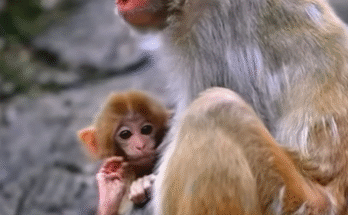At the magnificent Angkor Wat temple complex in Siem Reap, Cambodia, where ancient stone towers rise above the jungle, another story unfolds — one not carved in sandstone but written in the daily lives of the monkeys that inhabit the sacred grounds. These long-tailed macaques, once symbols of liveliness and curiosity, now live a life of hardship amidst the ruins and tourists.
The monkeys have become an inseparable part of Angkor Wat’s scenery, wandering through temple courtyards and clinging to weathered carvings of gods and demons. However, as tourism grows and natural food sources decline, their survival depends increasingly on human generosity — or neglect. Many of the monkeys are undernourished, their thin frames and desperate eyes reflecting a quiet struggle for food and safety.
Visitors often feed them snacks or fruit, but such kindness can sometimes lead to conflict. Human food changes their diet and behavior, causing aggression, dependency, and disease. With fewer trees and limited space, competition among groups has intensified, turning once-playful creatures into territorial survivors.
Yet, in the golden light of dawn, when the temple’s reflection dances on the lotus-filled moat, the monkeys still display remarkable resilience. Mothers cradle their infants tenderly, young ones chase each other across fallen stones, and elders sit in silent contemplation — much like the monks who once prayed there.
Their story is a poignant reminder that the harmony between humans, wildlife, and heritage must be preserved. The poor monkeys of Angkor Wat are not just part of the landscape; they are living witnesses to Cambodia’s timeless connection between nature and history — a bond that deserves compassion and care.


